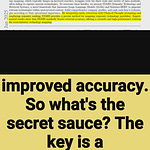The Mixture of Experts (MoE) paradigm struggles with processing big data's high dimensionality, heterogeneity, and dynamic changes, limiting traditional artificial intelligence algorithms. This paper reviews MoE as a solution, emphasizing its "divide-and-conquer" approach.
It utilizes expert networks for specialized sub-tasks and a gating network for coordination, enhancing big data modeling.
-----
https://arxiv.org/abs/2501.16352
📌 Mixture of Experts cleverly distributes computational load. It activates only relevant experts. This contrasts with dense models. Dense models activate all parameters for every input, which is inefficient.
📌 Mixture of Experts allows model scaling beyond dense model limits. Adding experts increases capacity. Crucially, computational cost grows sub-linearly with parameter count, because of the sparse activation.
📌 This paper highlights Mixture of Experts' inherent modularity. Experts specialize in data subspaces. This promotes interpretability. Gating network decisions reveal which experts, and data aspects, are relevant for a given input.
----------
Methods Explored in this Paper 🔧:
→ The core of MoE is dividing complex problems. It uses separate "expert" neural networks. Each expert handles specific data subsets.
→ A "gating network" dynamically chooses the best expert(s) for a given input. The gating network assigns weights.
→ The final output combines expert predictions. It uses the gating network's weights.
-----
Key Insights 💡:
→ MoE improves modeling of high-dimensional sparse data. It enhances fusion of heterogeneous data sources.
→ It facilitates online learning. It has better interpretability compared to single large models.
→ MoE shows high scalability. It optimizes resource usage. It promotes better generalization in big data environments.
-----
Results 📊:
→ The paper cites "GShard", applying MoE to the Transformer model, training models from 12.5 Billion to 600 Billion parameters.
→ "Switch Transformers" are mentioned, with up to 1.6 trillion parameters.
→ MoE++ outperforms traditional MoE with the same model size, with 1.1 to 2.1 times the expert throughput speed.










